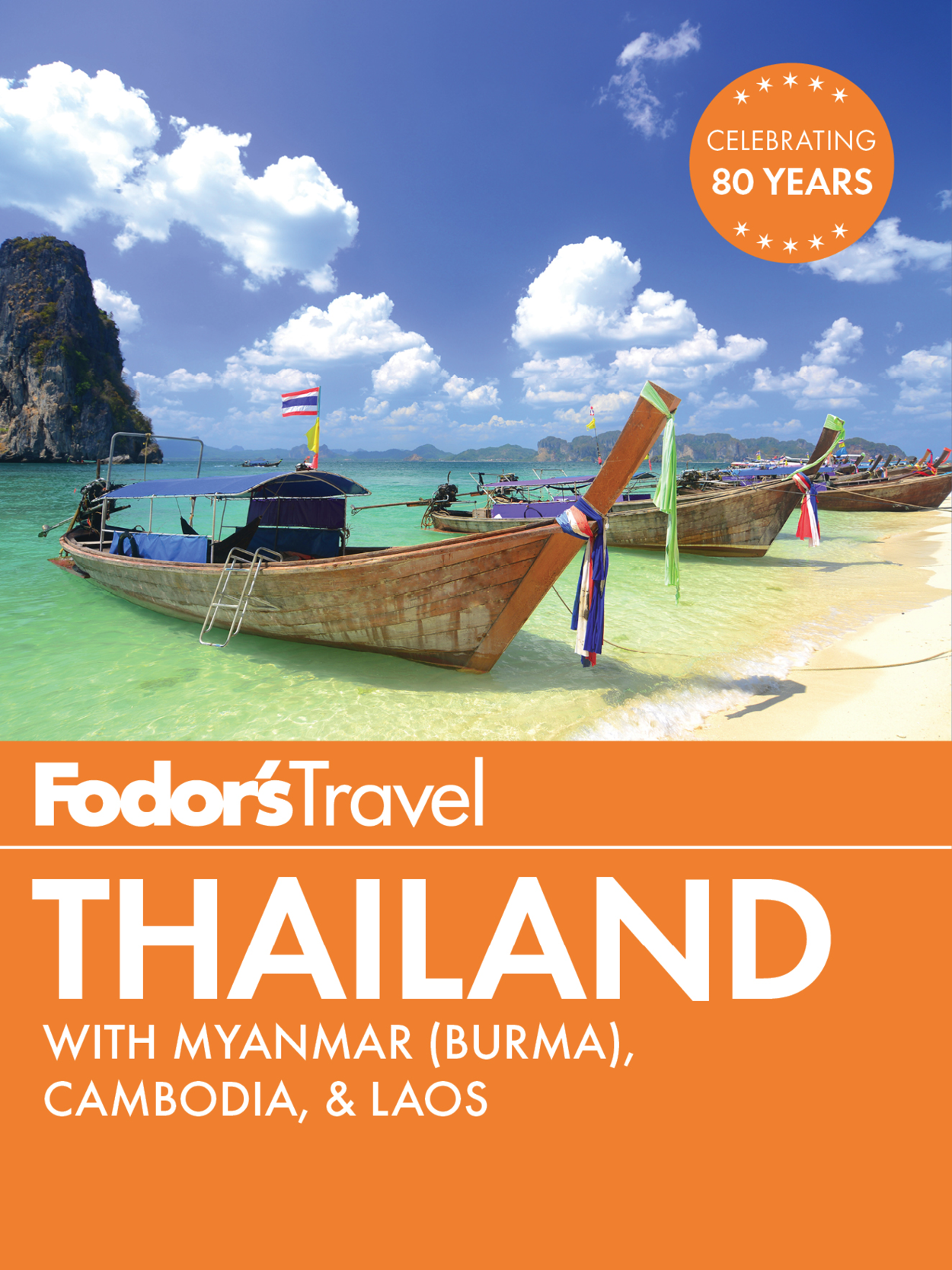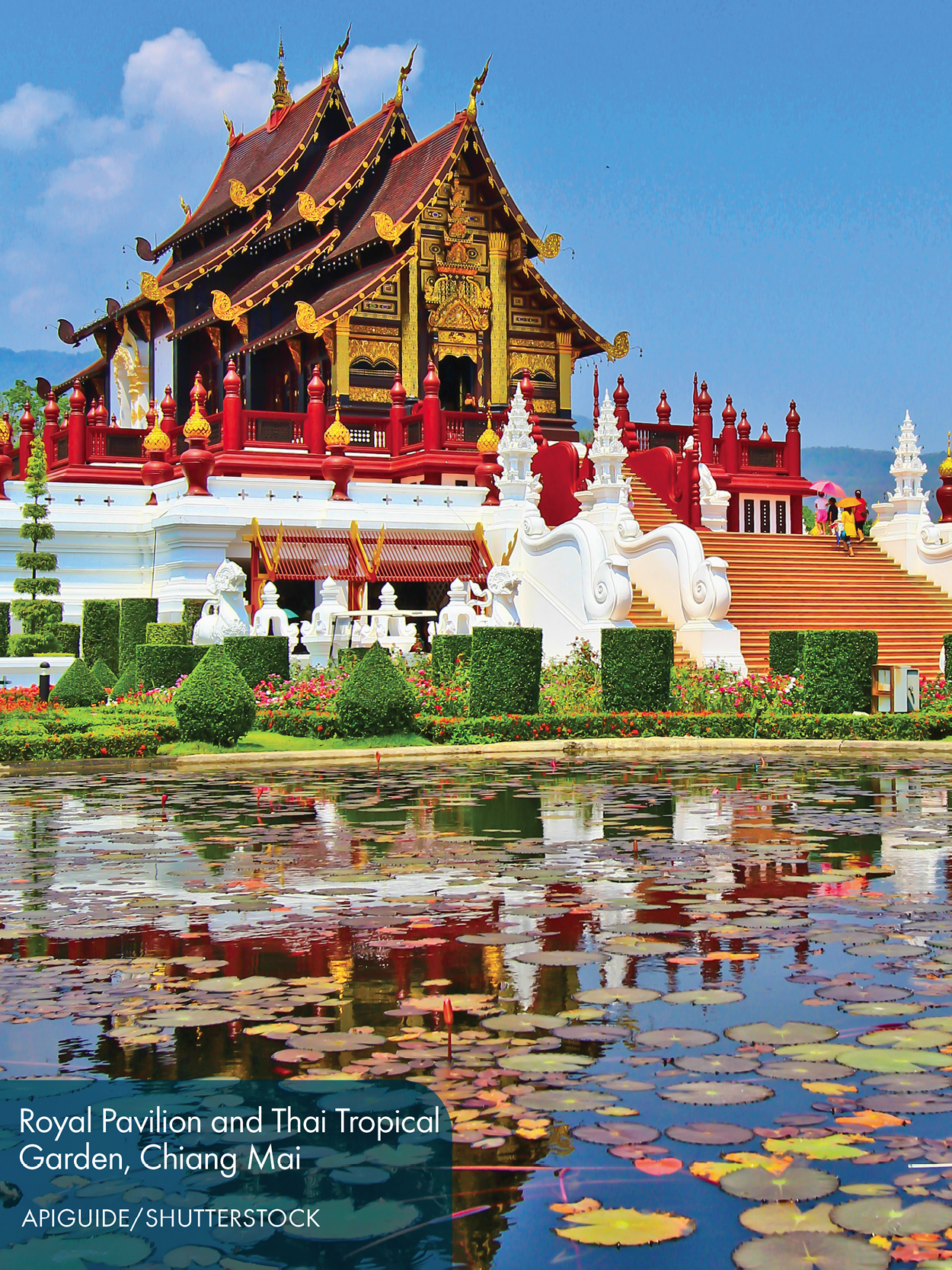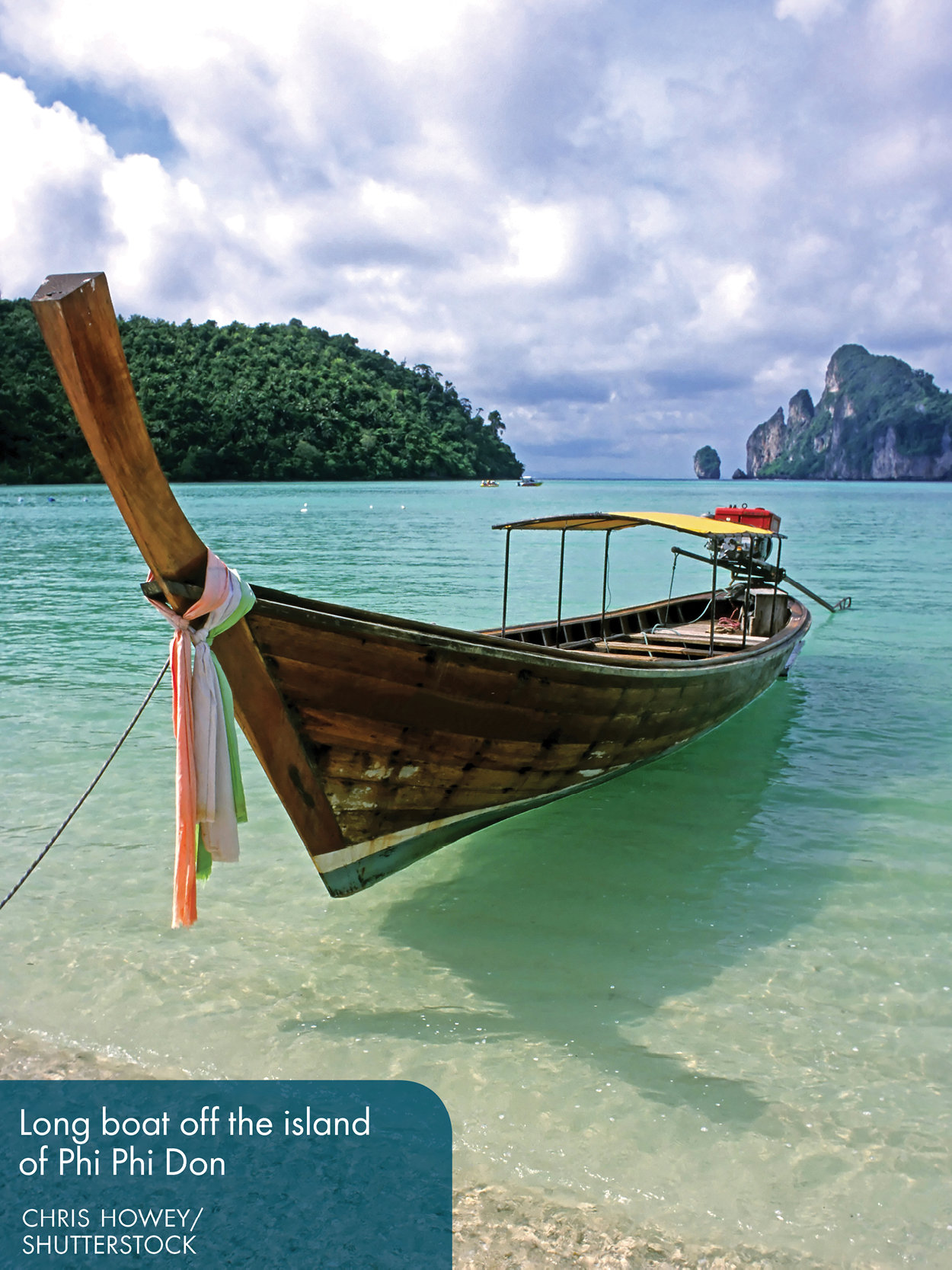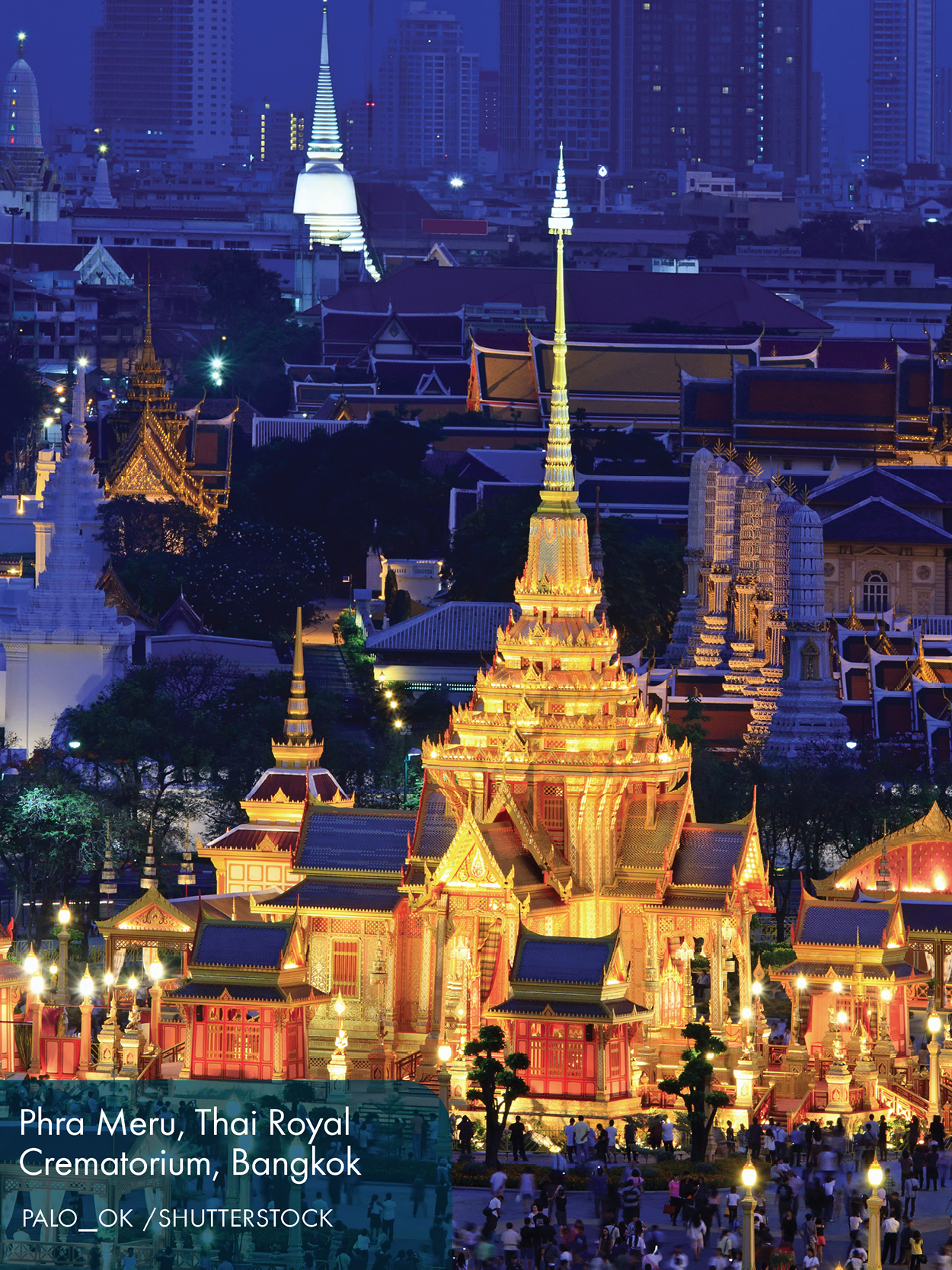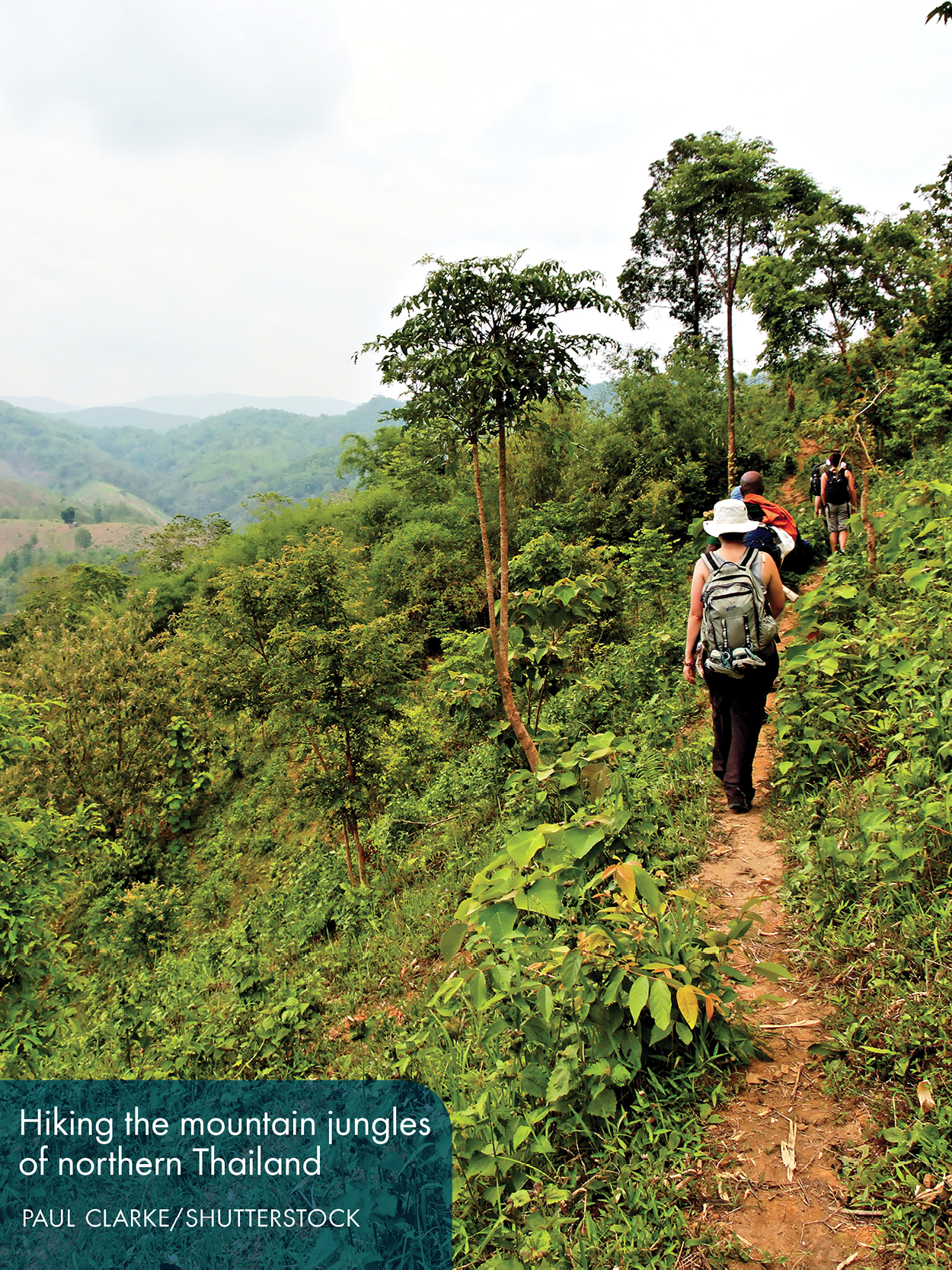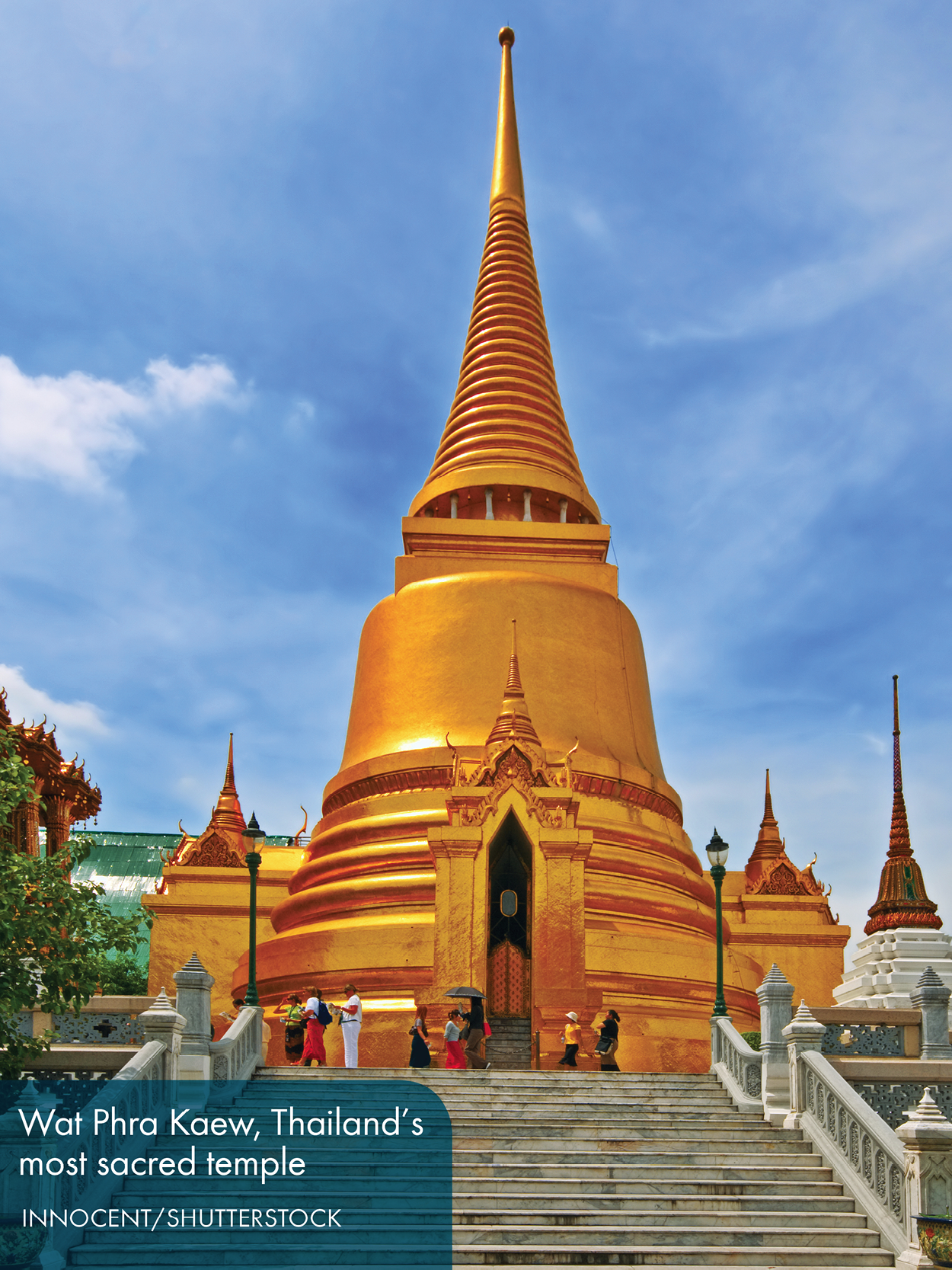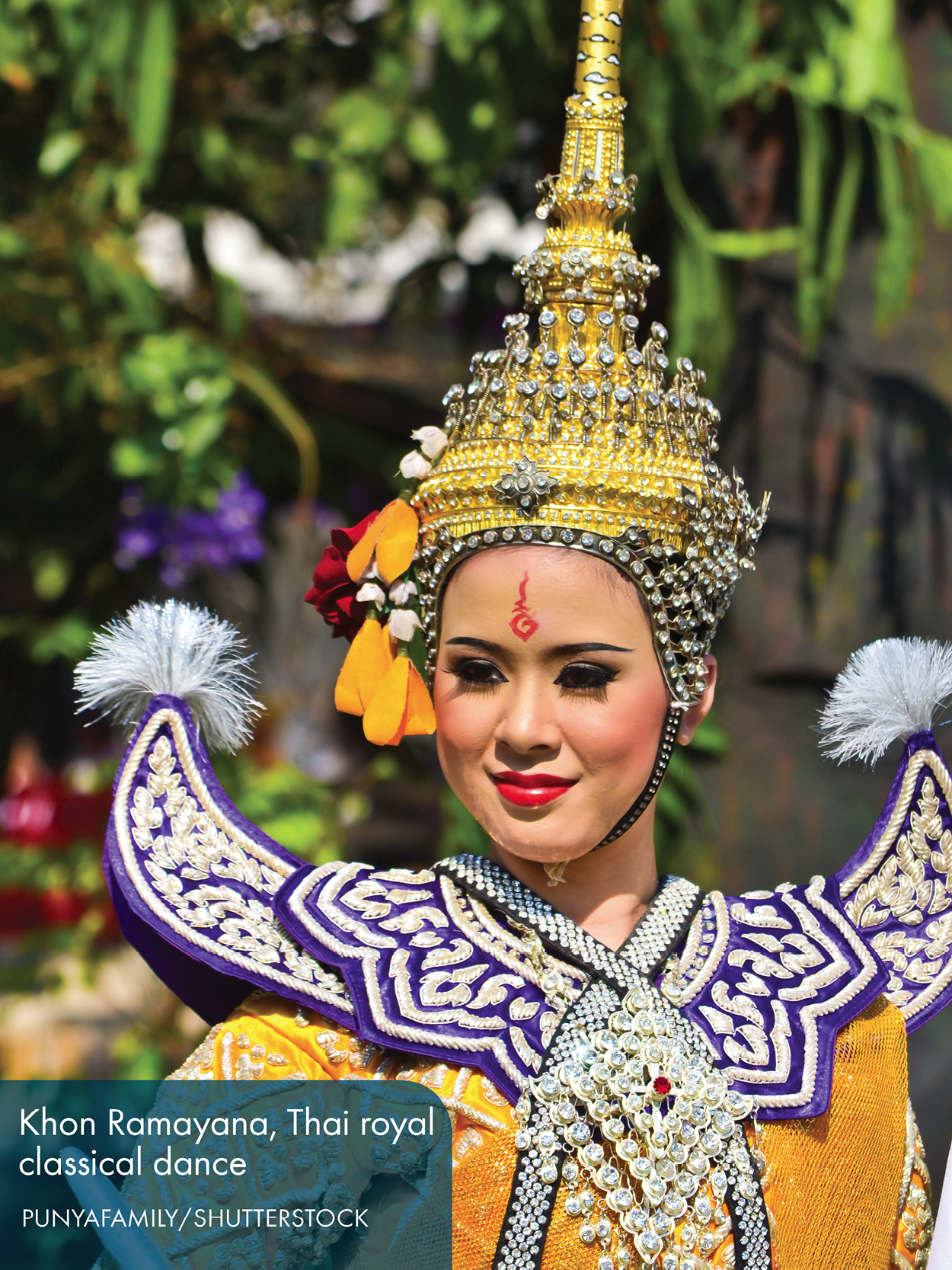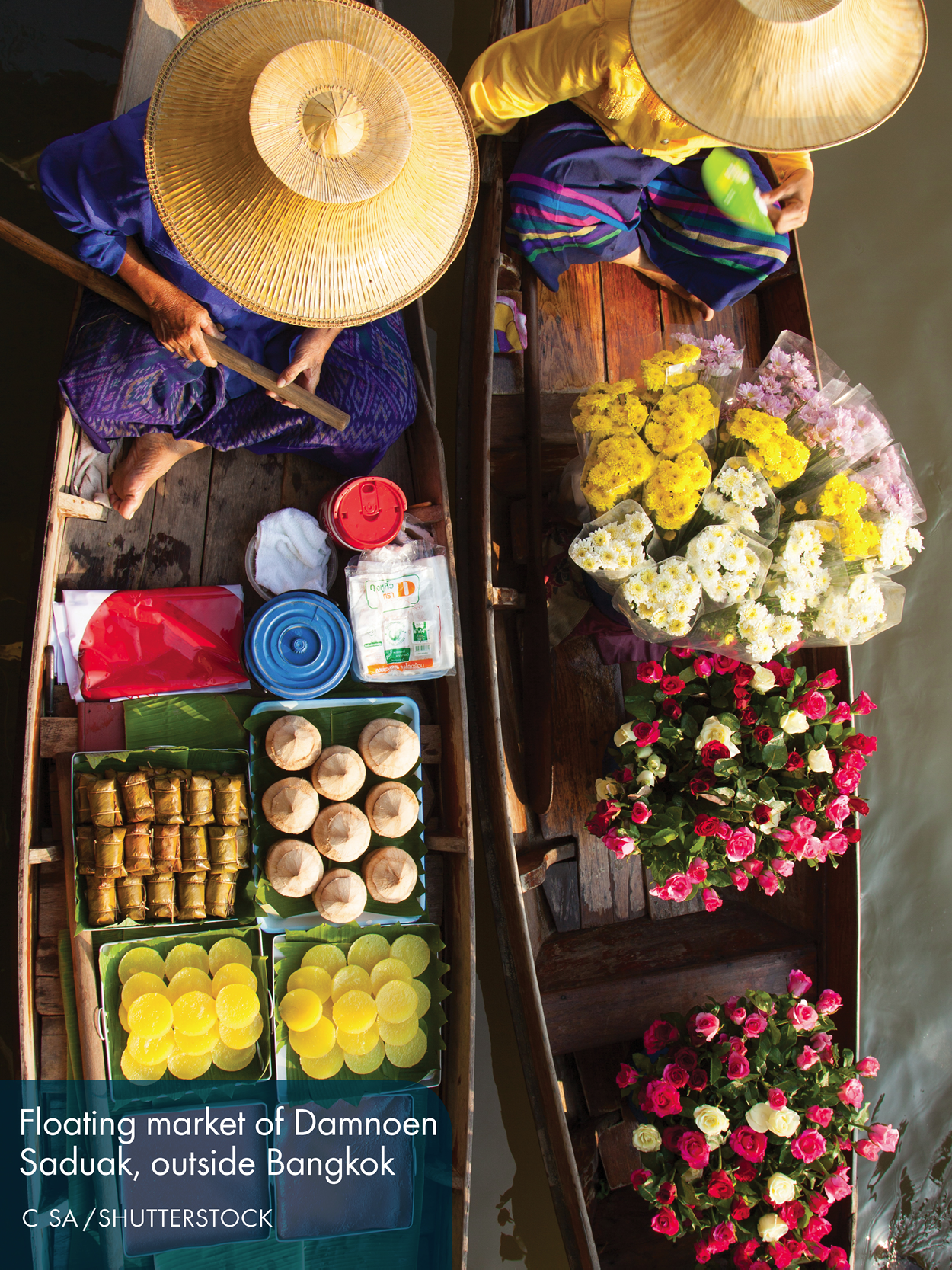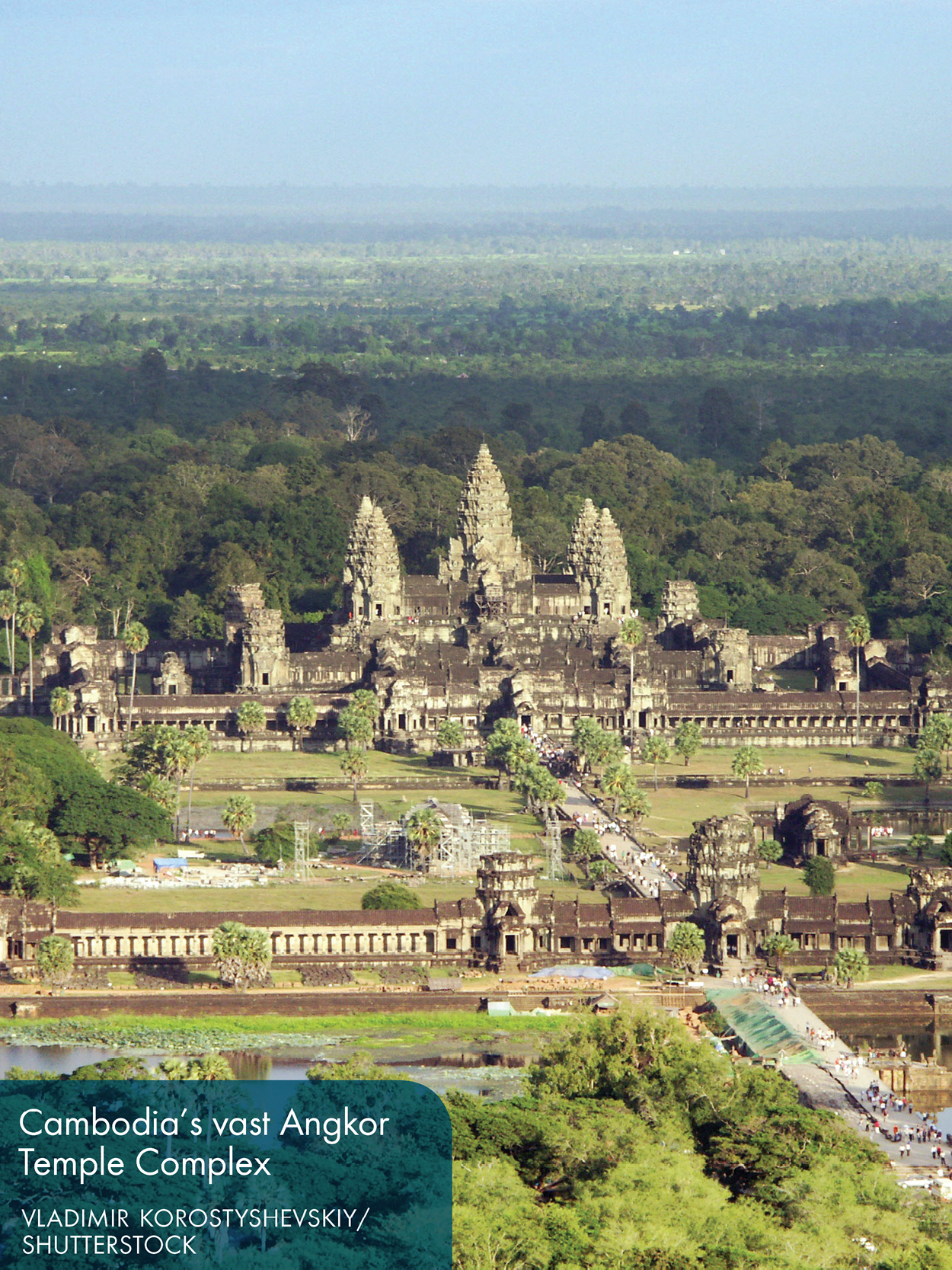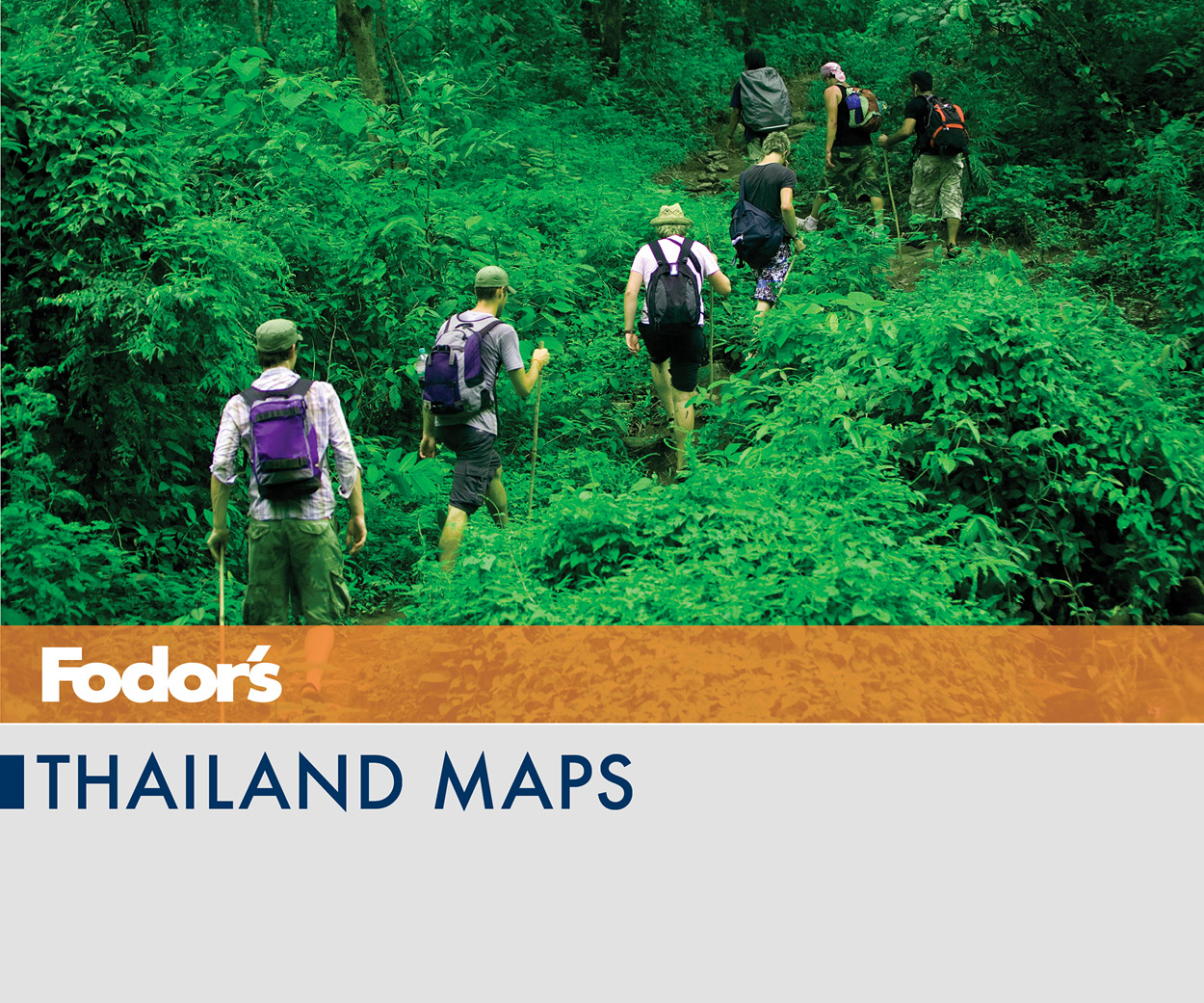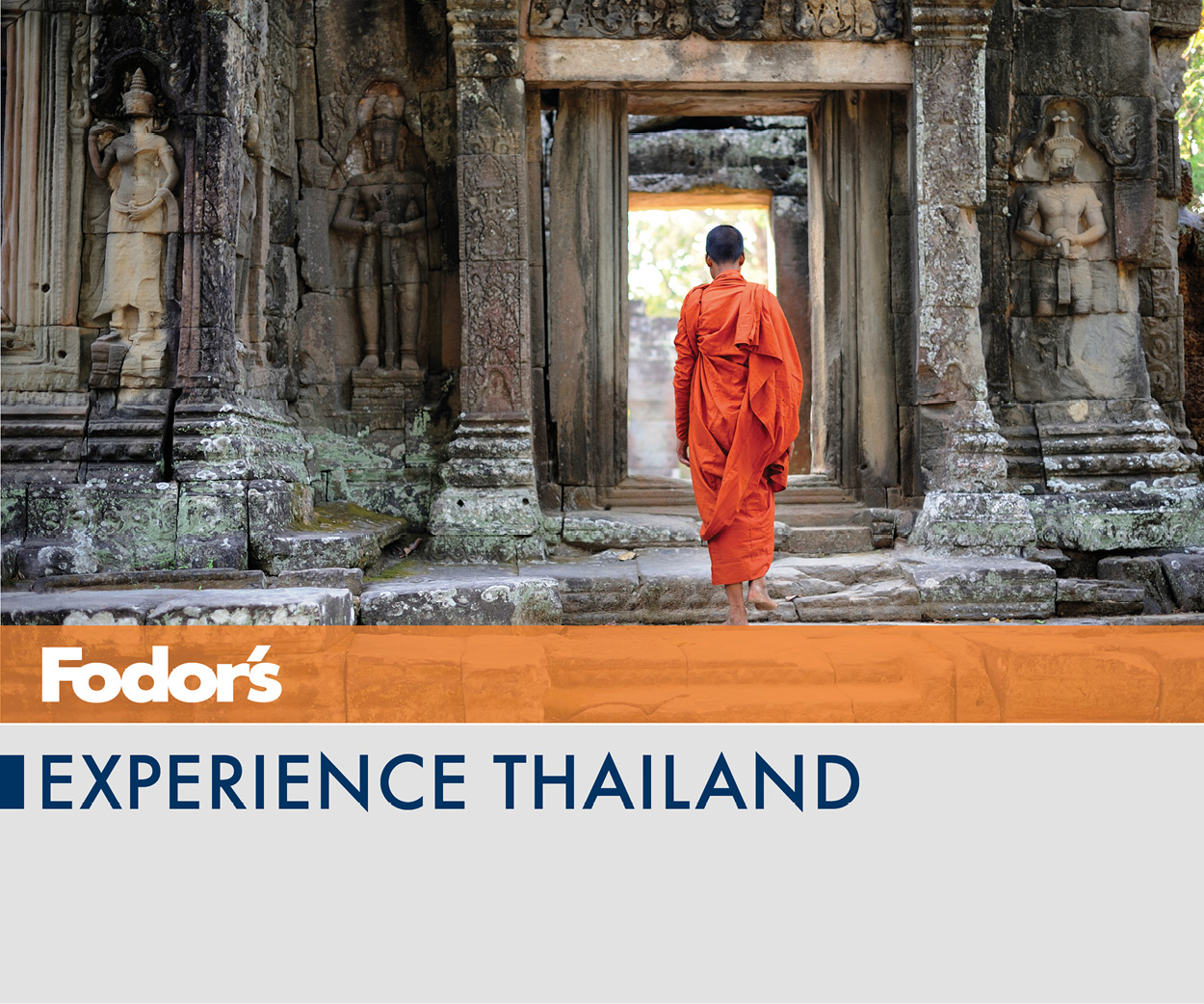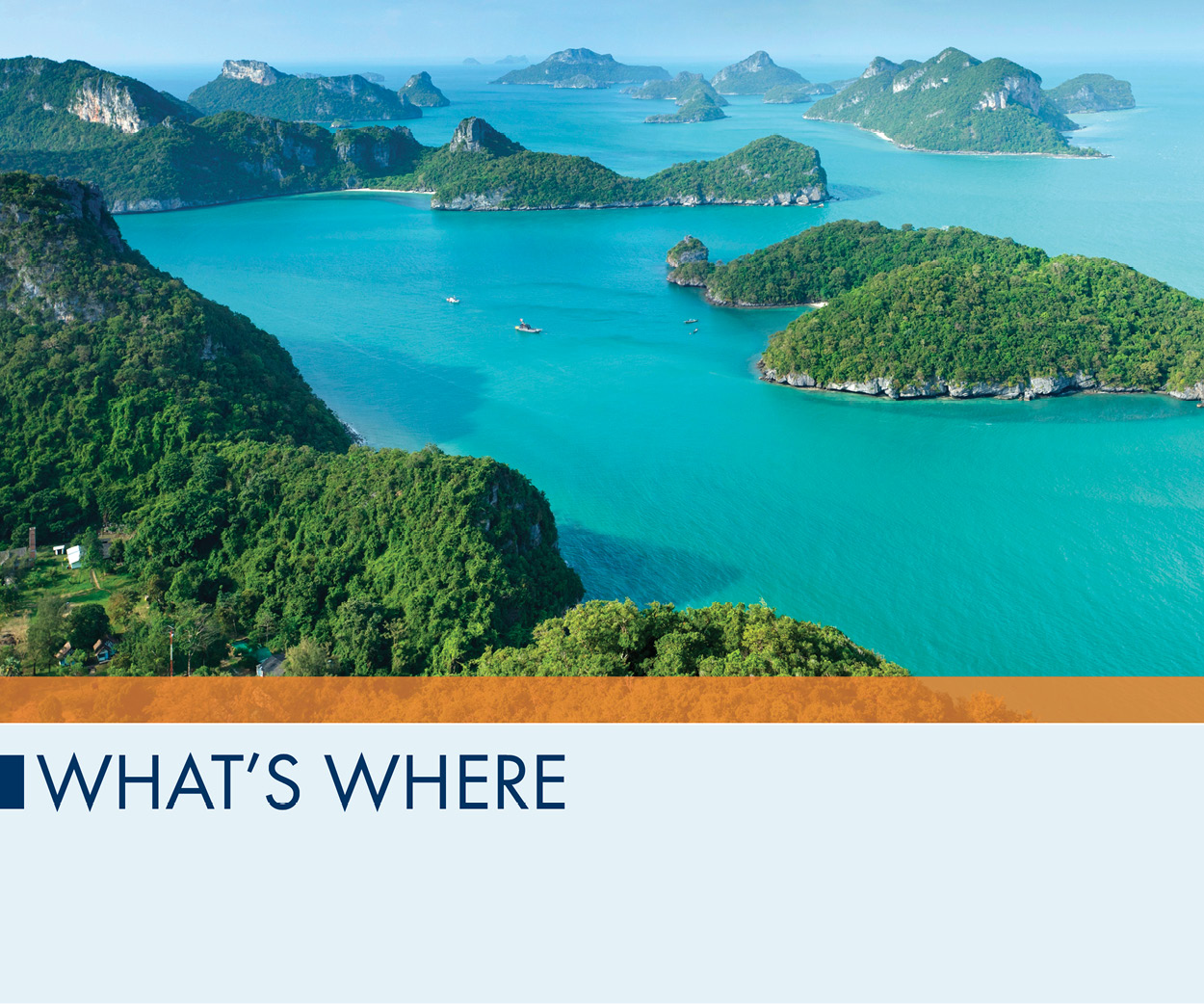Bangkok. In this boomtown of contrasts where old-world charm meets futuristic luxury, you can dine at street stalls or ritzy restaurants, visit the jaw-dropping Grand Palace, and shop at Chatuchak Weekend Market or Pathumwans designer malls. At night there are hip mega-clubs and Patpongs famous red lights, as well as quieter romantic restaurants and wine bars.
Around Bangkok. Petchaburi has ancient temples and a royal retreat, while Thailands oldest city, Nakhon Pathom, is home to Phra Pathom Chedi, the worlds tallest Buddhist stupa.
The Gulf Coast Beaches. Thailands two shores have alternating monsoon seasons, so theres great beach weather somewhere year-round. The Gulf has Pattayas nightlife and the island trio of Koh Samui (good sailing), Koh Pha Ngan (full-moon revelry), and Koh Tao (diving). The coastal drive to Trat is a pleasant, winding trip through the countryside. And south to Pattani, adventurers will find infrequently visited regions off the primary tourist circuit.
Phuket and the Andaman Coast. Highlights of this spectacular coastal region include Phuket, Phang Nga Bay (with James Bond Island), and Krabi, which is a paradise for divers, rock climbers, and foodies.
Chiang Mai. This moat-encircled city is riddled with temples and markets, and deserves a lingering stop in any tour of the north. Wander the narrow alleys and brick roads of the old city, then dine in the university area alive with hip young crowds.
Northern Thailand. Chiang Rai is a chilled-out regional center and the gateway to the Golden Triangle, where Laos, Myanmar (Burma), and Thailand meet. Thailands first capital, Sukhothai, has carefully restored ruins.
Cambodia. No Southeast Asia trip is complete without a visit to the temple ruins of Angkor. The capital, Phnom Penh, is a vibrant city with a thriving food scene. Cross the Tonle Sap (the great lake) to communities living in floating houses, or laze on Cambodias spectacular coastline. There is also plenty to interest hikers, birders, and wildlife buffs.
Laos. Photogenic rivers, mountainous countryside, and the dreamy feeling of going back in time are major reasons to make the trip across the border. World Heritage sites Luang Prabang and Champasak both have beautiful temples and the Plain of Jars will wow any archaeology enthusiast.
Myanmar. Some say Bagans temple ruins rival those of Siem Reap; in nearby Mandalay, the royal palace and Mandalay Hill offer a rich dose of history. The countrys one-time capital, Yangon, is a chaotic, colorful feast for the eyes and the stomach; at quiet Inle Lake, villagers have made their homes on the water.
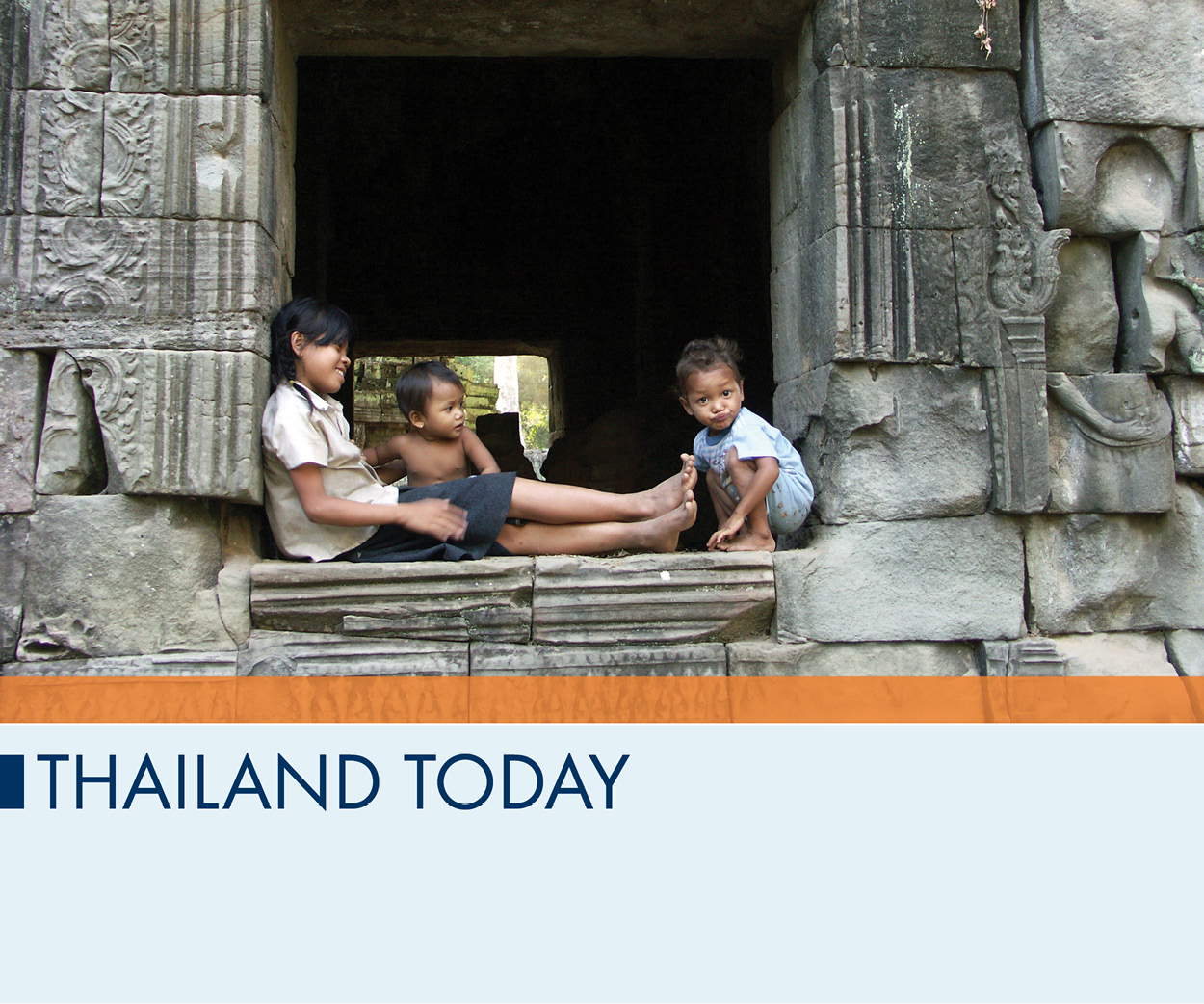
Political Strife. Business tycoon Thaksin Shinawatra, of the populist Thai Rak Thai party, was prime minister of Thailand between 2001 and 2006. Ever since, he has had devoted followersand foes. Those political rifts have divided Thais for years, the last several of which have seen violent protests and crackdowns. In 2006, Thaksin was overthrown in a bloodless military coup while traveling overseas, and he went into exile. A general election in 2007 brought in the pro-Thaksin Peoples Power Party (PPP), run by Samak Sundaravej. Many considered him to be a puppet for Thaksin. He was dismissed in 2008 on a technicality: illegally hosting a cooking show while holding office. Meanwhile, political riots escalated in 2008, at times halting government operations and even temporarily shutting down the international airport. The worst riots in nearly two decades broke out in April and May 2010, when the anti-government Red Shirts staged protests across Bangkok. For weeks business and politics remained at a standstill until the military crushed the protests. Hundreds of people were injured and several killed as central Bangkok became a war zone. Nothing was resolved. Protesters went home but vowed to continue their fight against the government. In July 2011, Yingluck Shinawatra, the younger sister of Thaksin, led the Pheu Thai Party to victory and became prime minister. She oversaw a contentious political period through May 7, 2014, when she was removed from office for abuse of power. After yet more protests, on May 20, 2014, the military seized control, implemented martial law, repealed the constitution, ousted several former cabinet members, and put a tight rein on the country under the National Council for Peace and Order with General Prayuth Chan-ocha at the helm. On April 2, 2015, the government lifted martial law and replaced it with a controversial security order that gives the military junta widespread powers. And the political drama marches on.
Ethnic Diversity. Throughout its history, Thailand has absorbed countless cultural influences, and is home to groups with Chinese, Tibetan, Lao, Khmer, Malaysian, Burmese, and other origins. Migrating tribes from modern-day China, Cambodia, Myanmar, and the Malay Peninsula were the regions earliest inhabitants. Ancient trade routes meant constant contact with merchants traveling from India, China, and other parts of Southeast Asia. Conflicts and treaties have continued to alter the countrys bordersand ethnicityinto the 21st century. Contemporary Thailands cultural richness comes from its ethnic diversity. Though Buddhism is the predominant religion, Hindu and animist influences abound, and theres a significant Muslim population in the south. Malay is spoken in the southern provinces; Lao and Khmer dialects of Thai are spoken in the northeast; and the hill tribes have their own dialects as well.


